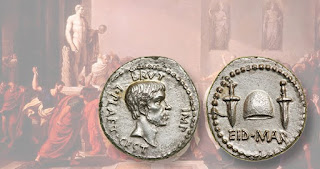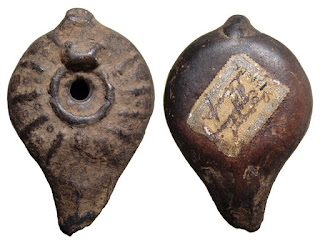The story behind the Ides of March Denarius coin
In 2011, a single coin was sold for over half a million dollars. The coin was a mint condition Ides of March Denarius, one of the most sought after ancient coins with tremendous historical value. This is the holy grail among collectors of ancient coins. According to antique experts at Sadigh Gallery, the story behind the production of the coin adds to its value today.
The Ides of March is a day in the Roman calendar, March 15. This day was a deadline romans set for debt settlement as well as other religious beliefs. It was also the day of Julius Caesar’s assassination at the hands of his senate led by Marcus Junius Brutus.
Julius Caesar was famous for becoming an emperor after refusing to relinquish the powers vested on him by the state during times of war. He was also the first emperor to put his face on the coins instead of gods or deities.
Two years after the assassination of Julius Caesar, Brutus issued a new coin. On one side, there were two daggers pointing down. Between the daggers was what they called a cap of freedom. Below these figures were the text EID MAR. And on the other side of the coin was an image of Brutus himself.
In the Shakespearean play Julius Caesar, the Ides of March was used by a character to warn Caesar of harm. It was also documented that a seer had foretold of a great harm that would come to the emperor no later than the Ides of March.
According to experts at Sadigh Gallery, coins like the Ides of March Denarius not only become more memorable because of their value, but because of the historical anecdotes they represent. Located in New York City, Sadigh Gallery is a family-owned business that specializes in the handling and selling of ancient art works and coins from all over the world. To know more about the gallery and its services, visit this website.
 |
Image source:
coinworld.com
|
 |
Image source: antiquanova.com
|
Julius Caesar was famous for becoming an emperor after refusing to relinquish the powers vested on him by the state during times of war. He was also the first emperor to put his face on the coins instead of gods or deities.
Two years after the assassination of Julius Caesar, Brutus issued a new coin. On one side, there were two daggers pointing down. Between the daggers was what they called a cap of freedom. Below these figures were the text EID MAR. And on the other side of the coin was an image of Brutus himself.
In the Shakespearean play Julius Caesar, the Ides of March was used by a character to warn Caesar of harm. It was also documented that a seer had foretold of a great harm that would come to the emperor no later than the Ides of March.
According to experts at Sadigh Gallery, coins like the Ides of March Denarius not only become more memorable because of their value, but because of the historical anecdotes they represent. Located in New York City, Sadigh Gallery is a family-owned business that specializes in the handling and selling of ancient art works and coins from all over the world. To know more about the gallery and its services, visit this website.



Comments
Post a Comment